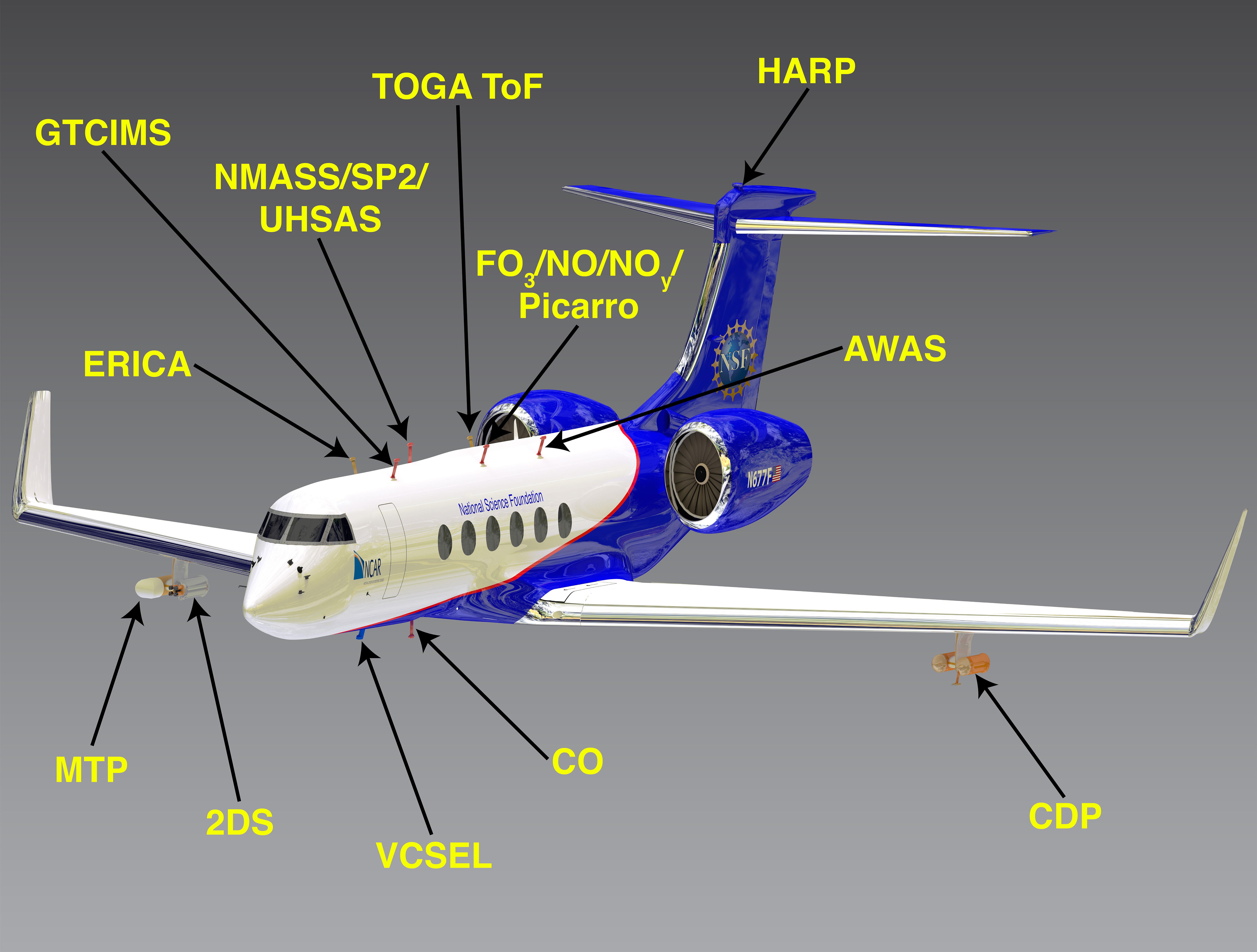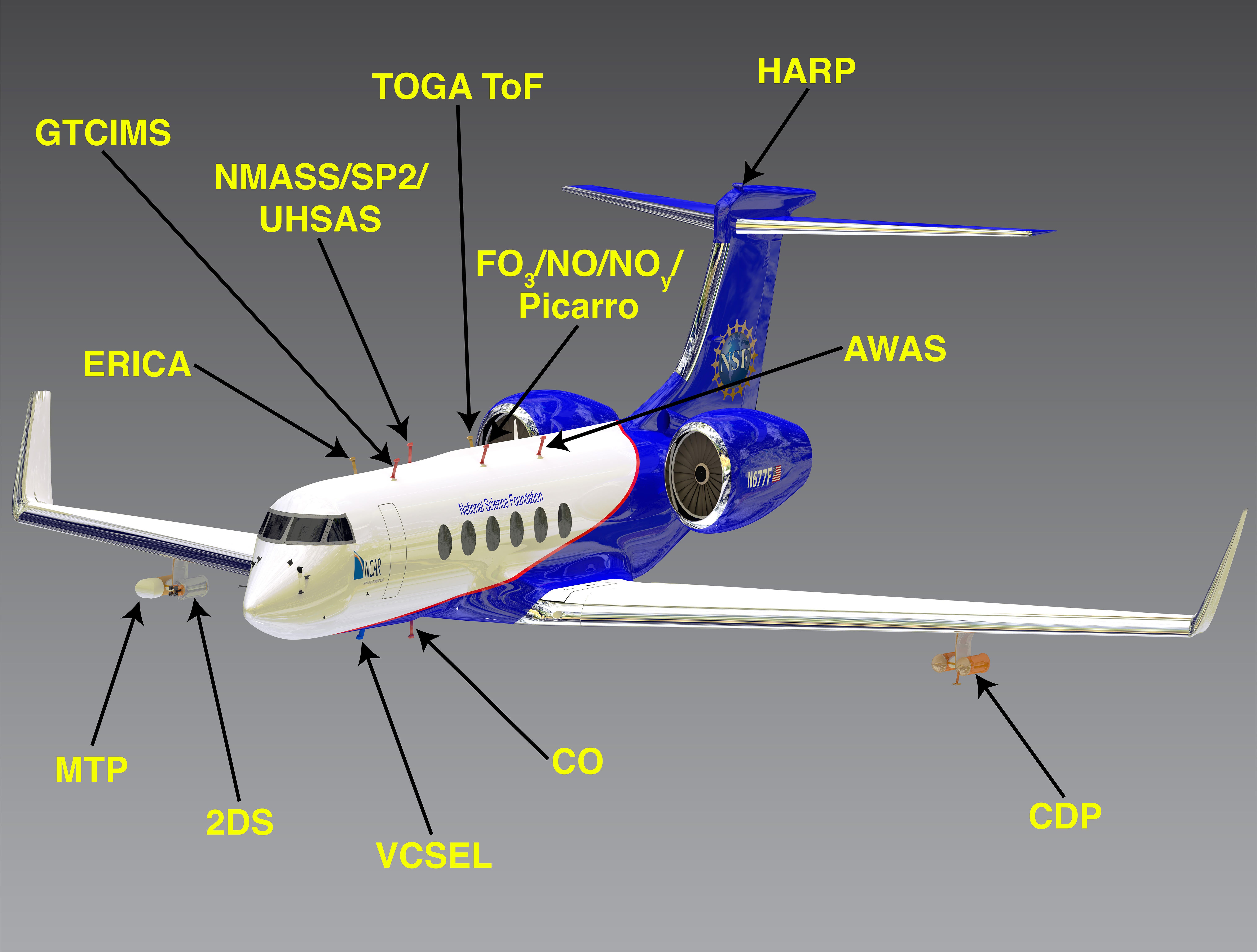Our research aircraft are essentially "flying laboratories." For each field campaign, a specialized suite of instruments is uploaded to the aircraft to meet the research needs of the study. EOL will deploy the NSF/NCAR Gulfstream V (GV) to support ACCLIP's science goal to quantify how the Asian Summer Monsoon (ASM) redistributes pollutants in the tropical atmosphere. The payload consists of instrumentation to measure chemistry and cloud dynamics, including trace gases, aerosols, radiation, clouds, and state parameters. The table below shows the instruments by research category, and the links provide detailed information.
| Trace Gases | Aerosols |
| FO3 | FastO3 + NO/NOy | NMASS | Nucleation-Mode Aerosol Size Spectrometer (size) |
| CO | Carbon Monoxide | UHSAS | Ultra-High Sensitivity Aerosol Spectrometer [size] |
| CO2, CH4 | Picarro | SP2 | Single Particle Soot Photometer (chemical composition) |
| GT CIMS | Georgia Tech Chemical Ionization Mass Spectrometer | ERICA | ERC Instrument for Chemical composition of Aerosols (particle types and elemental composition) |
| TOGA-ToF | Trace Organic Gas Analyzer | |
| AWAS | Advanced Whole Air Sampler | |
| VCSEL | Vertical Cavity Surface-Emitting Laser Hygrometer |
| Radiation | Clouds | State Parameters |
| HARP | HIAPER Airborne Radiation Package | 2DS | Two-Dimensional Optical Array Cloud Probe | MTP | Microwave Temperature Profiler |
| CDP | Cloud Droplet Probe | Position, Pressure, Temperature, and Humidity |
See the floor plan for the ACCLIP instrument suite on the NSF/NCAR HIAPER.
ACCLIP Project Manager Data Quality Report
2024 SABRE and ACCLIP Joint Science Team Meeting (202403)
Third ACCLIP Science Team Meeting (202211)
Second ACCLIP Science Team Meeting (202201)

